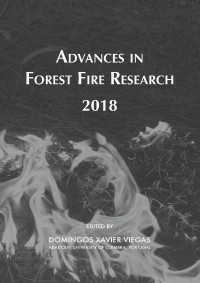Please use this identifier to cite or link to this item:
https://hdl.handle.net/10316.2/44597| Title: | Coupling multi-criteria analysis and GLM for modelling houses vulnerability to forest fires at WUI | Authors: | Maillé, Eric Pugnet, Lilian Hedan, Jessica |
Keywords: | vulnerability;damages;multicriteria analysis;generalized linear models | Issue Date: | 2018 | Publisher: | Imprensa da Universidade de Coimbra | Journal: | http://hdl.handle.net/10316.2/44517 | Abstract: | In the French Mediterranean context, a quite low number of damages are caused by the forest fires on anthropogenic values. The usual statistical correlative approaches for vulnerability modelling, aimed at explaining the observed damages with some local variables, may lack of repetitions in comparable conditions. To overcome this constraint, we coupled an expert opinion based multi-criteria analysis and modelling (MCM) approach and some generalized linear models (GLM) techniques in order to specify a vulnerability model validated in different contexts. The method consists in first defining an opinion based model of vulnerability using a multi-criteria analysis. The specified model allows calculating some vulnerability indexes in relation to the value of some vulnerability criteria. The relationship between the vulnerability indexes provided by the MCM outputs and the observed damages is then tested by comparing indexes values in the samples of comparably exposed damaged and non-damaged houses. Non-parametric tests have to be used due to the relatively low number of observations and the uncertainty of the distributions normality. Logistic binary regressions with a logit link function are then defined with the aim to explain damaged or non-damaged comparably exposed houses to fire by the MCM vulnerability indexes. . In order to avoid autocorrelation effects, a shifted vulnerability index is integrated to the model as an additional explanatory variable, the auto-correlation having been previously assessed with the Moran index. If the binary regression is significant, a polytomic logistic regression is tested in order to assess the effect of the calculated vulnerability indexes on damage level. This latest is assessed using a six levels scale of damages on objects, the main dwelling building or the whole site. Although the very high variance in both damages occurrence contexts and scenarios, results show the possibility to validate a general model of vulnerability by coupling the MCM approach and statistical analysis of observed damages. One of the most constraining requirement is to find some damaged and non-damaged sites that were equally exposed during the event. Physical modelling of fire behavior is often used to assess the exposure. However, the systematic data collection of damages on anthropogenic values using a normalized protocol, and its dissemination in a shared data base would be a great progress for decision support in land management and planning for WUI vulnerability mitigation. | URI: | https://hdl.handle.net/10316.2/44597 | ISBN: | 978-989-26-16-506 (PDF) | DOI: | 10.14195/978-989-26-16-506_80 | Rights: | open access |
| Appears in Collections: | Advances in forest fire research 2018 |
Files in This Item:
| File | Description | Size | Format | |
|---|---|---|---|---|
| coupling_multi-criteria_analysis.pdf | 880.2 kB | Adobe PDF |  |
Items in DSpace are protected by copyright, with all rights reserved, unless otherwise indicated.
